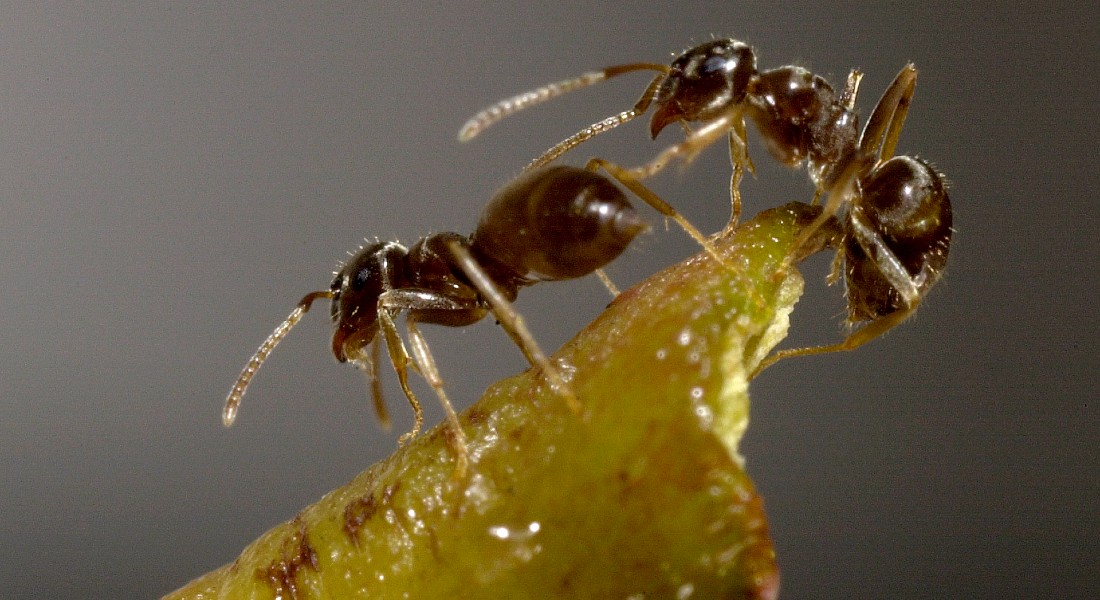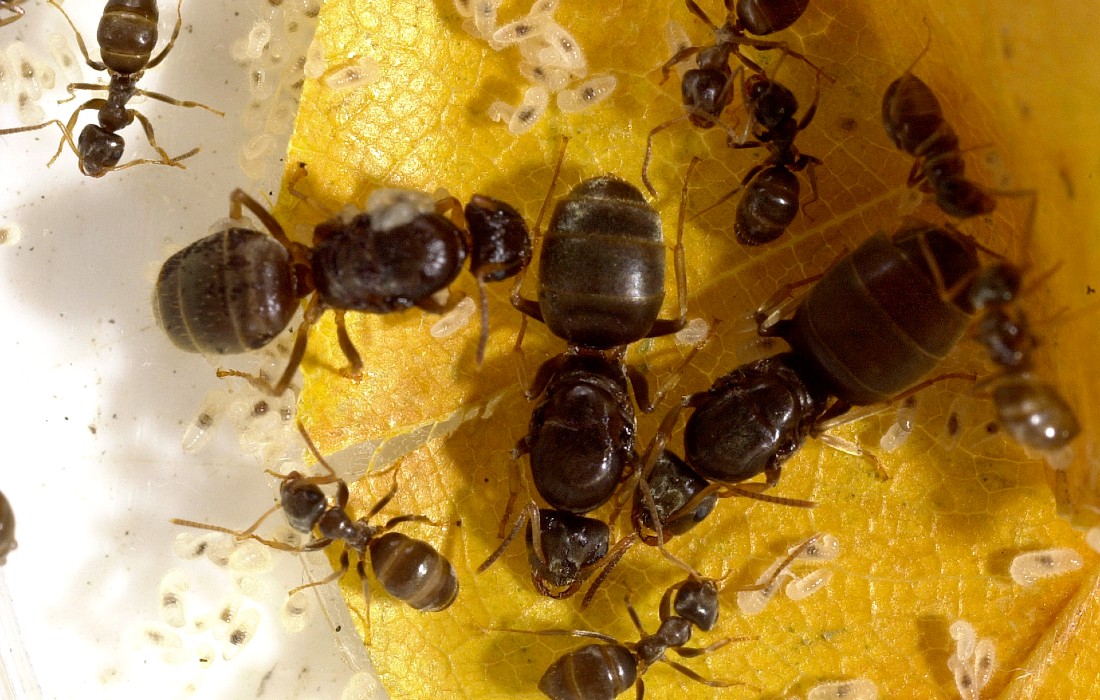Invasive ant species headed to Denmark: super colony builders ruled by several thousand queens
A warmer climate is causing new species of ants to head for Denmark. One of them is likely to invade soon, according to a researcher at the University of Copenhagen. The species spreads quickly and can be a great nuisance to home and garden owners.

It is highly likely that Denmark will soon be colonized by a new and invasive ant species that is moving further and further north as the climate warms. Last seen in Rostock, Germany, just 45km from the ferry to Denmark, the ant goes by the simple and very telling name "invasive garden ant".
The invasive garden ant (Lasius neglectus) differs from other ant species in that it can rapidly build super colonies with enormous ant populations. In part, this is because, instead of having just one queen to lay eggs, thousands of queens are typically involved in rapid propagation.
"The invasive garden ant is the species we’d least like to see in Denmark because it wreaks havoc in homes, gardens and on roads. Because their numbers are so massive, they can easily move soil, tiles and terrace floors around," says biologist Rasmus Stenbak Larsen of the University of Copenhagen’s Department of Biology, who specializes in ants.
Similar to the common black garden ant, the invasive garden ant digs and nests in wide-reaching underground tunnel networks. Studies from England demonstrate that the invasive garden ant is capable of making 10-100 times larger colonies than the black garden ant as colonies can grow by up to 20m per year, in all directions. In England, the ant has been seen occupying an area of 12 hectares – the equivalent of 17 football fields – in just a few years.

Originally from Uzbekistan
Beyond having many queens to lay eggs, the invasive garden ant has another card up its sleeve when it comes to spreading effectively and increasing the size of the colony.
"Typically, nearby ant colonies will fight over food and other resources. But something else happens when invasive garden ants invade new areas. Instead of splitting up into different colonies and fighting, they stick together in a nearly invincible super colony," explains Rasmus Stenbak Larsen.
The ant does not threaten general biodiversity according to Larsen, as it is mainly found in cities and gardens, not rural areas. When however, they invade a new backyard, they take over completely.
"This severely impacts the insect communities wherever these ants settle. On one hand, it outcompetes other ant species, while at the same time, it is a predator that feeds on a variety of insects," says the researcher.
Researchers found out that the invasive garden ant originated in Uzbekistan a few years ago. It was from there that the species spread to countries in Central Asia, Western Asia, the Canary Islands and much of Europe, including Denmark’s southern neighbours.
The spread occurs both naturally, where the ant moves with its ever-growing super colony, but especially with the help of humans, who move building materials, plants and soil, or other things where these ants can hide and be transported over great distances and across borders.
Homeowners encouraged to keep their eyes open
The invasive garden ant is very similar to the common black garden ant, which most people know from the cracks between garden tiles. But the invasive garden ant stands out on two points in particular:
"One way to identify them is that there will be far more ants in a given area than one normally sees. At the same time, there will also be several wingless queens present in the ant nest, identifiable as the largest of the ants," explains Rasmus Stenbak Larsen.
The researcher urges Danes to keep an eye out for the new ant species this summer. If you think you may have found an invasive garden ant, the Danish Environmental Protection Agency’s invasive group encourages you to share your finding on arter.dk: https://mst.dk/natur-vand/natur/invasive-arter/hvilke-arter-er-invasive/
Facts:
- The invasive garden ant has been found in most of Denmark’s neighbouring countries, including England, the Netherlands, Germany and Poland. It has yet to be observed in Norway, Sweden and Denmark.
- The super colony is built of many ant nests that connect in a network where workers and queens all roam freely.
- Ant nests in the super colony are so dense that a piece of land can accommodate about ten times as many invasive garden ant workers than if the same plot of soil were populated by black garden ants.
- Young invasive garden ant queens and males have wings but remain underground and do not fly far away like black garden ants do.
- 85 of the world's 16,000 different species of ants are found In Denmark, 59 of these species live outdoors, while 26 only live in heated buildings.
- All Danish ants were given Danish names last year, so that we can discuss them without having to use their difficult scientific names in Latin (see here).
- Five new ant species are currently on the researcher’s radar, all of which will probably be found in Denmark in the foreseeable future.
- Read more about ants: https://mst.dk/
The Danish Environmental Protection Agency urges for possible findings of this species be reported on arter.dk
Contact
Rasmus Stenbak Larsen
Academic staff
Department of Biology
University of Copenhagen
Mobile: +45 51 92 88 51
Mail: RSLarsen@bio.ku.dk
Michael Skov Jensen
Journalist
The Faculty of Science
University of Copenhagen
Mobile: +45 93 56 58 97
Mail: msj@science.ku.dk
